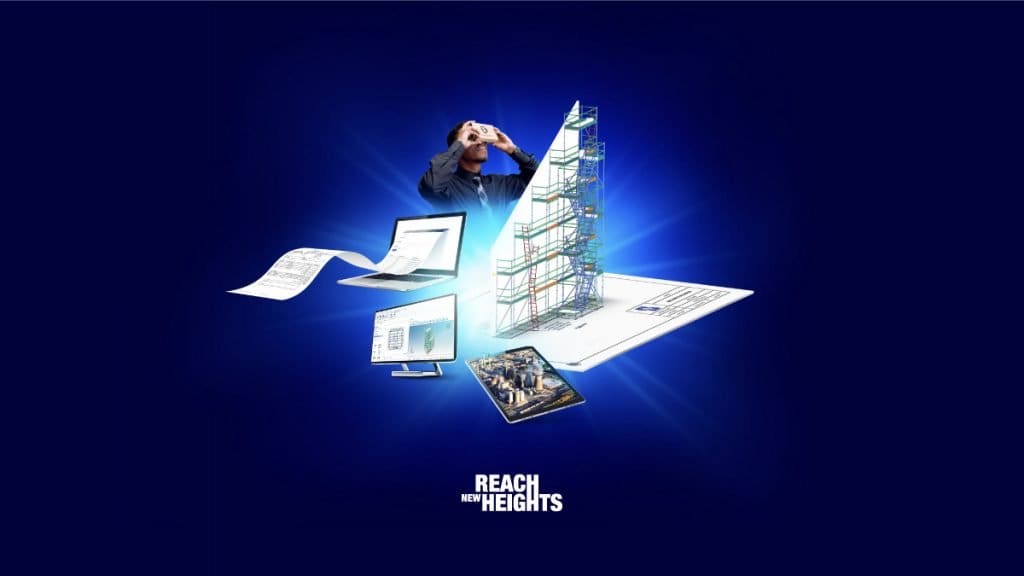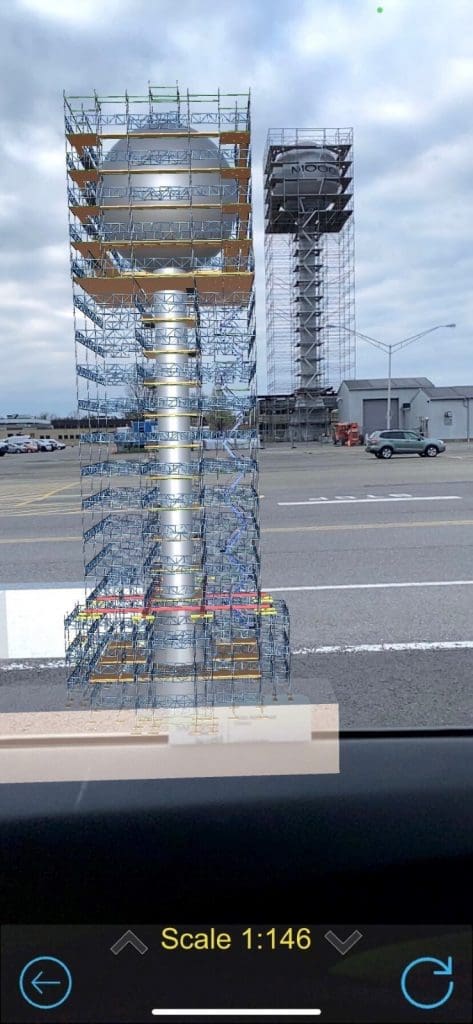From Bid to Build: How Scaffolding Software Supports Every Step of Scaffolding Projects
In today’s construction landscape, digital tools are reshaping how scaffolding companies operate—from the initial bid to project closeout. As the… Read More
Your Site Without Guesswork: ScaffoldIQ Webinar | Nov. 4 at 10 AM AWST, Nov. 5 at 11 AM GMT, Nov 6. At 9 AM PST | Register

With the advent of the Fourth Industrial Revolution (IR 4.0), new technologies made possible by increasingly powerful and complex processors are changing the way we live, communicate, and work. The construction/scaffolding industry is not exempt from this wave of rapid digital transformation, a trend that is only expected to accelerate in a post-pandemic world, according to McKinsey & Company.
Nonetheless, preparing your company for a digital future is not an easy task. According to Forbes, some of the biggest barriers for companies in digital transformation are a lack of budget and a lack of general understanding on both the problem and solution. If you’re a scaffolding business owner, you’re probably unsure where to even begin, worried about how much it will cost, or if it will even pay off in the future.
Fear not! We will address those concerns in this blogpost by (1) going over a major innovation (the successful integration of virtual/augmented reality (VR/AR) technology with scaffold design software) that you can easily implement and (2) providing an in-depth explanation of what it does, what problems it can solve, and how you can get started with Avontus products.
In layman’s terms, you can think of augmented reality (AR) as the technology behind Google Glass. It allows a real-world view of computer-generated sensory input, including images with real-time translations from your phone (see below). In scaffolding, this means being able to visualize computer-generated scaffolds by simply viewing the construction site through an AR-enabled device such as your mobile phone or tablet.

Virtual reality (VR) technology can immerse users in a computer-generated environment filled with realistic 3D models using VR goggles or headsets. In construction, VR allows you to walk through and even interact with 3D construction models inside the simulated world.

When working at height, safety is paramount. Scaffold design especially play a big role in ensuring that scaffolds are compliant and safe for all users. Unfortunately, even the safest design can go awry when the actual scaffolds are being built due to miscommunication between scaffold users and contractors. When there is a gap between the design and the build, safety hazards can occur. When these hazards are not pointed out and discussed before the build, valuable resources are expended for the necessary changes and modifications, which can hurt your performance and subsequently your profitability.
This is where an AR/VR enabled app like Avontus Viewer® comes in. Before actually handing over your design, you can go through it virtually with the relevant stakeholders to catch any safety issues and clashes before your men and materials hit the job site. Not only will you save time and labor costs by avoiding unnecessary last-minute changes, you will also enjoy more productive hours and avoid safety issues.

Scaffolding projects are not immune to the perils of scope creep, which occurs when requirements or deliverables are changed or added after the project has started for whatever reason. This is a particularly nasty issue for scaffolders because scaffolds can’t just be put up or taken down on a whim. If your scaffolds depart from the initial scope, the reworks might hurt your margins or worse, cause delays that upset your customer.
If you are struggling to deliver scaffolding that meets your customer’s expectations within the project scope, this is where VR/AR technology can really shine. Using Avontus Viewer in tandem with Scaffold Designer® helps you create a virtual, easily-modified model that is available from first bid to the time of build. Your designers and contractors can then simultaneously verify the work on-site, capture any ad-hoc changes, and create accurate variations to deliver successful projects within scope and budget thanks to Avontus Viewer’s mobile-friendly interface.

Improved Sales & Marketing
“Show, don’t tell” is the principle behind most effective marketing narratives – it’s the difference between telling your client you do great work versus them actually seeing proof of it. This leads us to another key benefit of VR/AR technology in scaffold design.
With VR technology, you don’t have to convince your customers how great your 2D design is. You can literally walk them through it. Even if they aren’t scaffolding experts, being able to show them your design brought to life will make it easier to illustrate the value of your scaffold design. This can help you avoid getting dragged into a “lowest bid wins” situation.
The best part is, you don’t even have to show them yourself. With Avontus Viewer’s one-click Youtube export feature, you can easily compile a portfolio of virtual 3D walkthroughs that potential new clients can easily access. The clear visualization can reassure them of your expertise and ability to meet their expectations.
As part of the construction industry, the scaffolding industry has to keep up with new innovations or risk going the way of Kodak – a cautionary tale for those who refuse to innovate.
Multiple scaffolding companies are already gearing up for the digital-first future by deploying Avontus Viewer, so don’t fall behind. Click on the button below to get started!